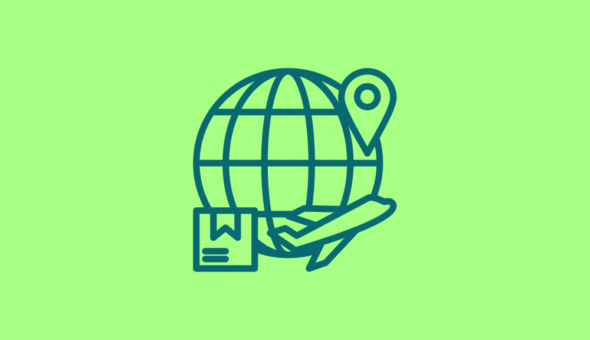Jas Kalra, Mehrnoush Sarafan, Rehema Msulwa, and Joe Harrison are researchers in the HPC Supply Chain Innovation Lab, Information, Decisions & Operations (IDO) Division, at the School of Management, University of Bath. Michael Lewis is Head of the Information, Decisions & Operations (IDO) Division at the School of Management, University of Bath. Graeme Yardley is Supply Chain Lead for Shell UK. Jens Roehrich is a Professor in the HPC Supply Chain Innovation Lab, Information, Decisions & Operations (IDO) Division, at the School of Management, University of Bath.
As the UK enters the sixth week of lockdown, supply chains have become visible like never before; revealing to the public at large the ‘globally networked’ reality of businesses. Although a lot of commentary has focused on the geographical structure of modern supply chains, especially the proportion of medical products sourced from China, the most pressing concerns relate to supply chain disruptions.
Why is it that the supermarkets initially ran out of, even more locally sourced products, like toilet rolls, soaps and flour? In part this is the result of changing demand patterns, not necessarily hoarding or panic buying (although market research firm Kantar did report that “6% of liquid soap buyers have taken home extraordinary quantities”), but because of supply chain structures that have traditionally separated consumers and businesses customers (e.g., restaurants). In other words, there’s actually plenty of product in the system, but it’s just not where people want it to be right now. This raises some profound challenges for supply chains in terms of how much - and whether they can - adapt their operating to what may be an extended but still temporary shift.
Supply chains should be used to this?
The tragic coronavirus pandemic is dramatic and widespread but, for those tasked with managing global supply chains, it is only the latest in a long list of global disruptions. The last two decades have seen many disruptions such as the impact of Hurricane Katrina (2005), the Eyjafjallajokull volcano eruption (2010), the L.A. and Long Beach Port strike (2018), the carbon dioxide (CO2) shortage (2018), pirate attacks off the coast of Somalia and the (possible) impact of a chaotic Brexit. No matter how sophisticated businesses’ supply systems or risk planning are, managers have repeatedly faced the critical challenge of recovering from significant supply chain disruptions.
In 2011, for example, most of the world’s automakers used metallic paints made with Xirallic, an aluminium-oxide-crystal compound, which was 100% manufactured by a single factory in an area of north-eastern Japan that had to suspend operations because of the earthquake and subsequent tsunami. Many businesses were surprised to find their standard risk management techniques (such as having two suppliers for critical parts) didn’t hold further down the supply chain.
Just as automotive firms discovered then, and almost all firms are learning now, you need to think strategically about supply chains. First, they need to start thinking about their wider supply ‘network’, their suppliers-suppliers, and their suppliers, and so on. This should also include ongoing assessment of potential suppliers. Unfortunately, many businesses reacted by cancelling orders to smaller suppliers, invoking Force Majeure clauses in their contracts, leading to increased risks of bankruptcy. In the case of global supply chains, in the garment industry for instance, such actions can have even more profound and damaging consequences. Happily, we have also seen examples of more empathetic and strategic behaviour as many supermarkets, for example, started to change their payment terms to support their supply chains.
Second, in order to cope with disruptions, worries about efficiency must be balanced with considerations of responsiveness and resilience. The canonical recovery example in the supply chain world has long been the differential responses of Nokia and Ericsson (Sheffi and Riche Jr., 2005) to a serious fire at one of their core suppliers. Nokia took a series of immediate, proactive steps to access alternative supplies and thus recovered more quickly and effectively than Ericsson, which initially decided to “wait and see”. Sound familiar?
Short- and long-term changes
As raised at the start of this piece, adapting long established supply chains is not easy. Consider the example of flour again. Once restaurants, bakeries and food service firms restart operations, they will need large sacks of flour, and consumer demand for smaller quantities will drop back down. Any decision a firm takes today to change production facilities, packaging lines or distribution structures will likely be very expensive. How, whether and when they should adapt in the face of what may be an extended, but still temporary, shift is a classic strategic dilemma.
The disruption might also accelerate the progress of more innovative (and hence disruptive) approaches (like the exponential growth of video-conferencing) such as additive manufacturing and drone deliveries. Buyers could also think more radically about identifying ways by which organisations can leverage each other’s supply chains, instead of competing with each other. In the past, buyers have done this by forming purchasing consortia and combining their material requirements. The consortium would then be used to negotiate a larger contract value, thus increasing negotiation power with suppliers. In these times of economic and social uncertainty, such consortia could be utilised for more benevolent means such as supporting smaller organisations and suppliers. However, all these efforts would require significant investments and creative thinking on larger buyers’ part supported by government. Governments could also develop schemes such as providing SMEs with loans at lower interest rates to facilitate their cash flow.
While disruptions to supply chains are never easy to deal with, these trying times require, more than ever, a combined approach between buyers, suppliers and governments around the world, so that we can cope with disruptions and, who knows, maybe even function as stimulus to more innovative ways of working.
For further in-depth research on a range of supply chain challenges, please visit the HPC Supply Chain Innovation Lab and Information, Decisions & Operations (IDO) Division websites.
Are you a decision-maker in government, industry or the third sector responding to the coronavirus crisis? Apply now to our virtual Policy Fellowship Programme for access to University of Bath research and expertise. Learn more.
All articles posted on this blog give the views of the author(s), and not the position of the IPR, nor of the University of Bath.
Respond




